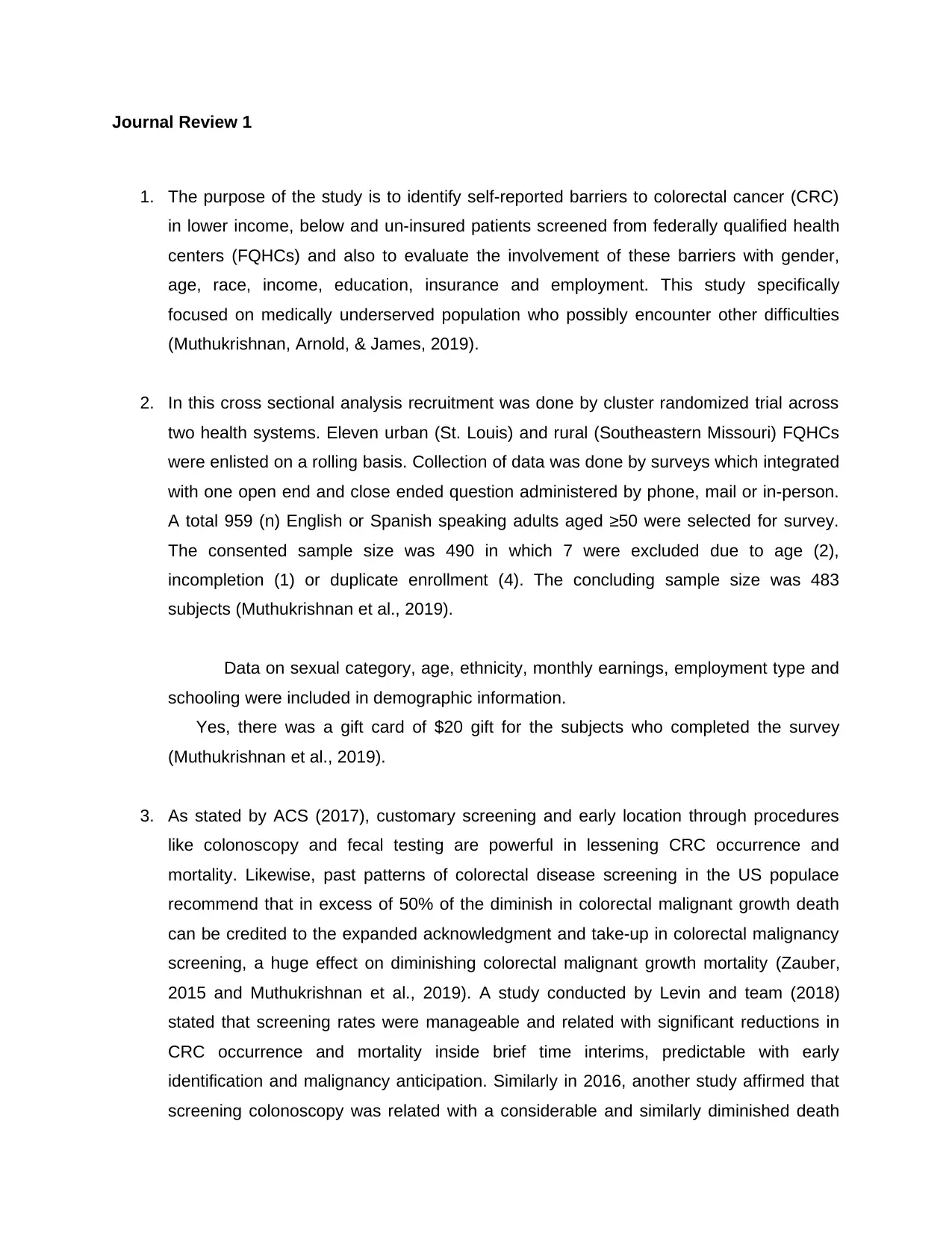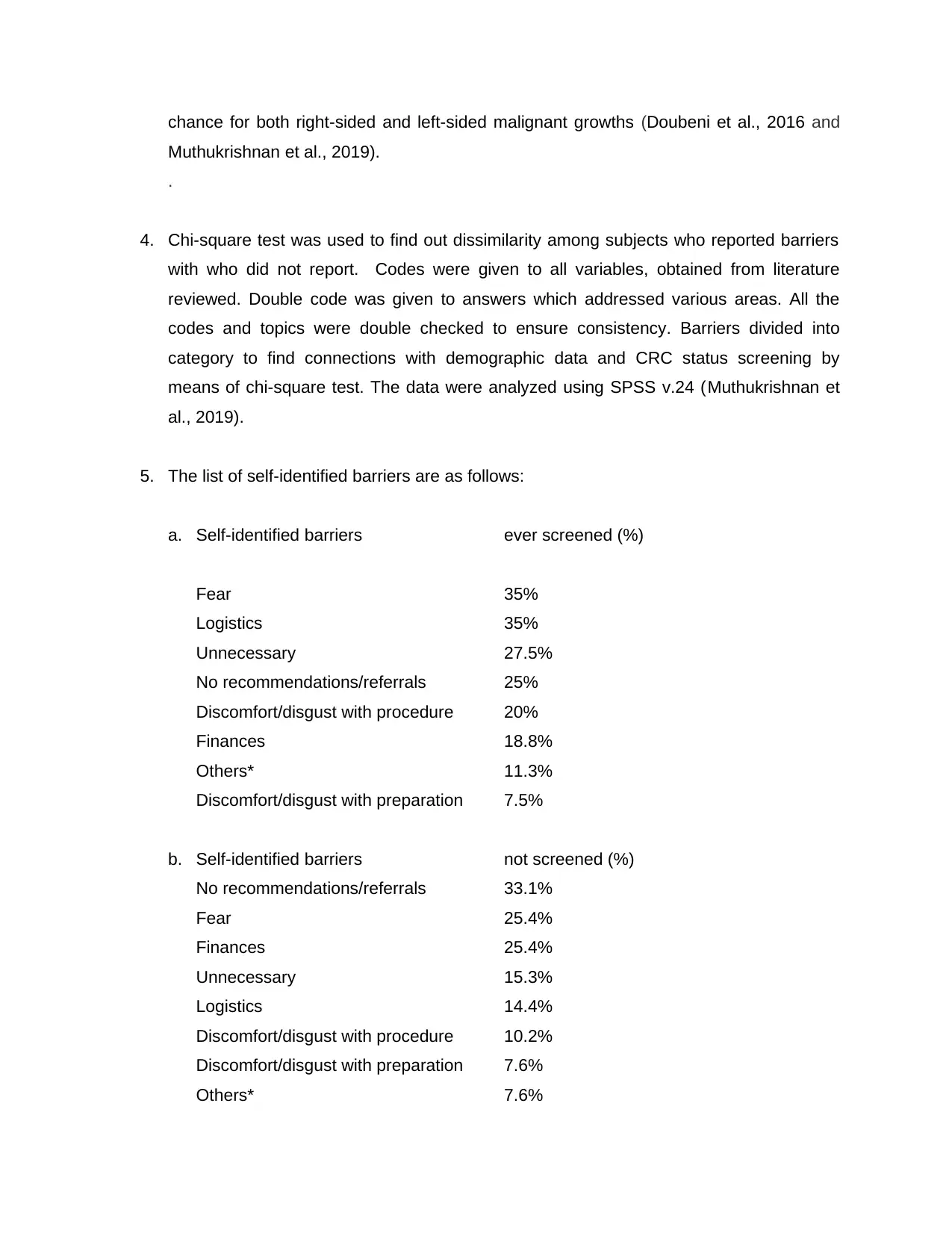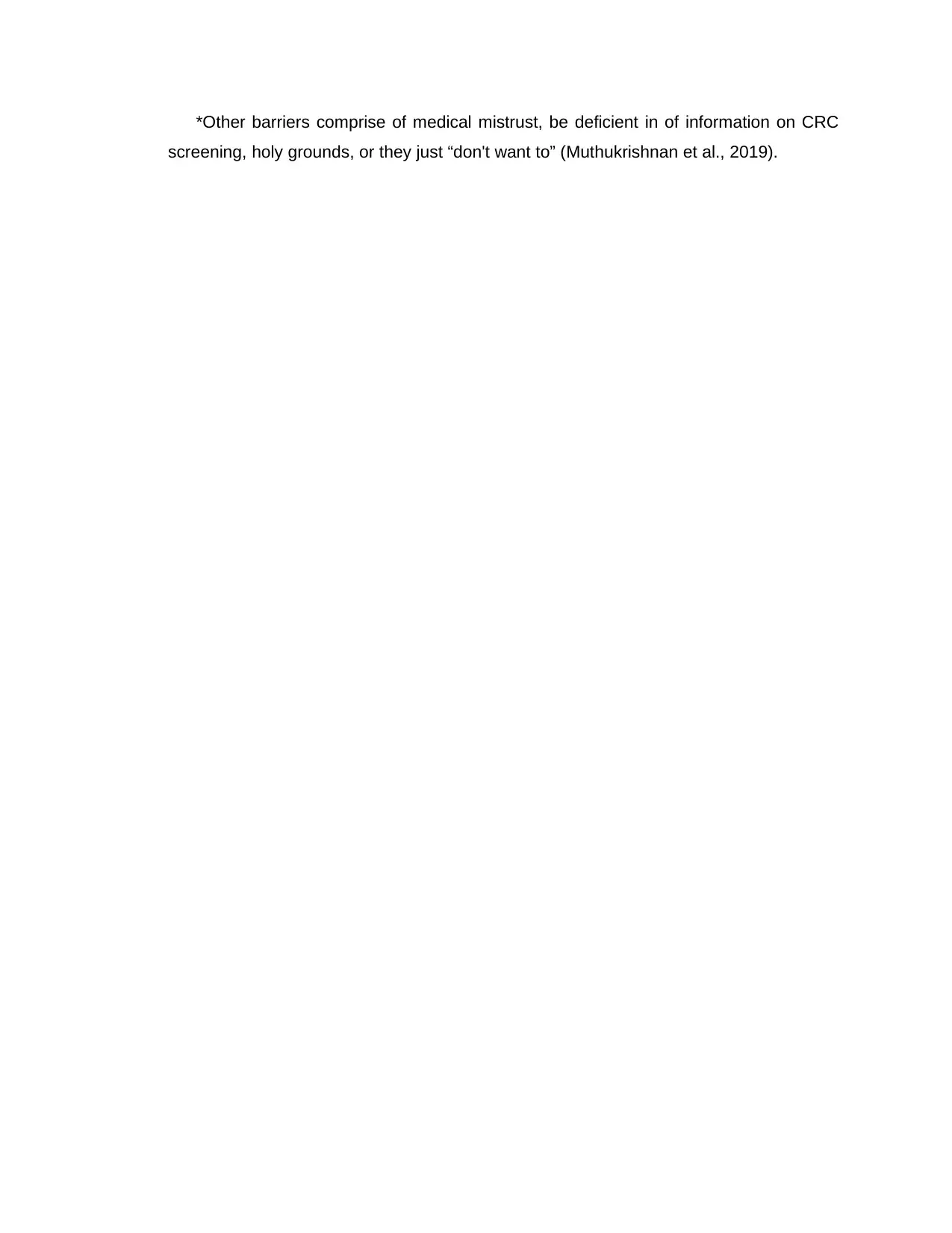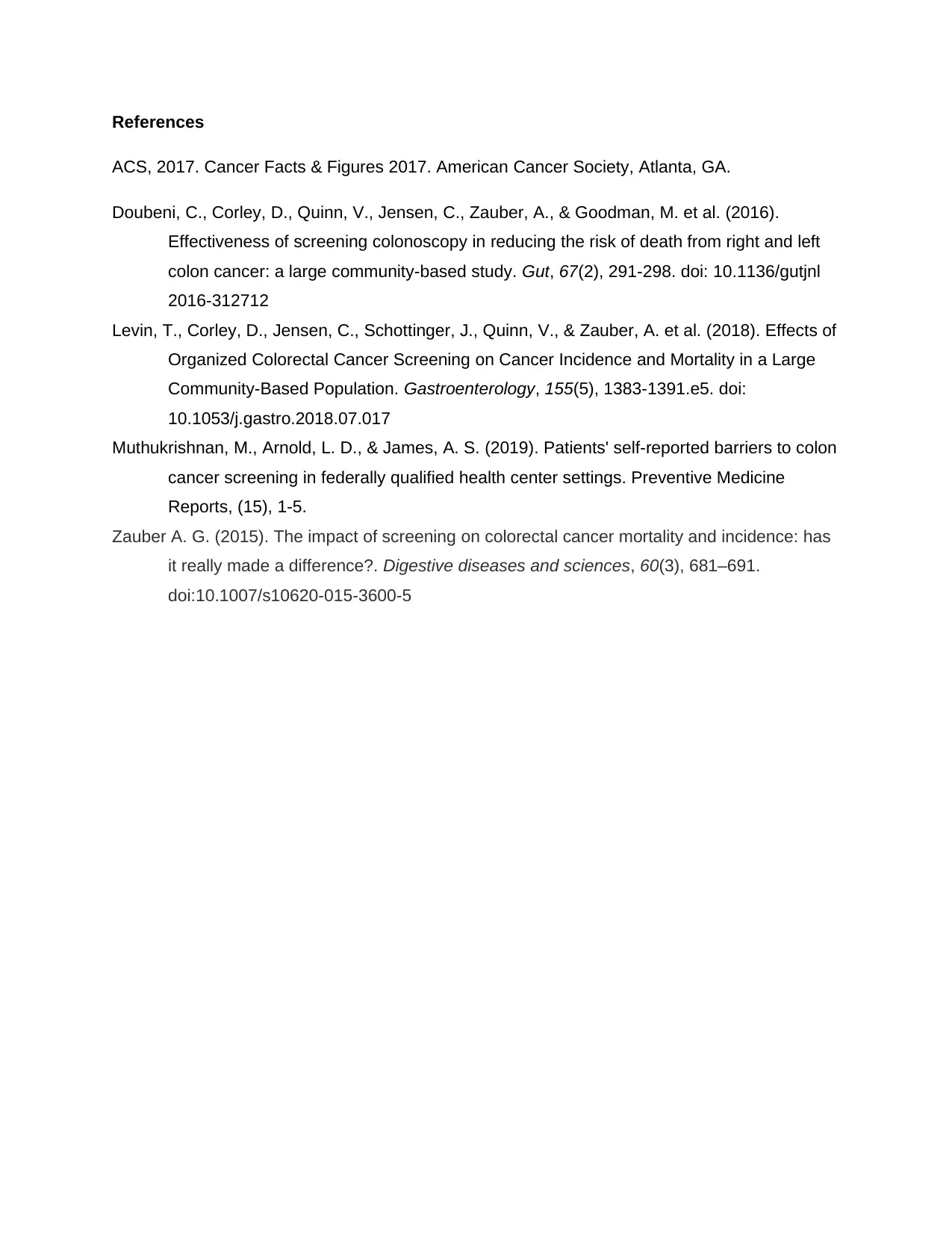Endeavour College: BIOC211 Journal Review - CRC Screening Barriers
VerifiedAdded on 2022/10/17
|4
|862
|16
Report
AI Summary
This journal review analyzes a study that investigated self-reported barriers to colorectal cancer (CRC) screening among low-income, uninsured patients from federally qualified health centers (FQHCs). The study aimed to identify the barriers and assess their relationship with factors such as gender, age, race, income, education, insurance, and employment. Data was collected through surveys administered to 483 adults aged 50 and older. The research found that the most common barriers included fear, logistical issues, and the perception that screening was unnecessary. The study highlights the importance of addressing these barriers to improve CRC screening rates and reduce mortality, emphasizing the impact of early detection and prevention through procedures like colonoscopy and fecal testing. The research used statistical methods, including the chi-square test, to analyze the relationship between barriers and demographic data. The findings underscore the need for targeted interventions to increase screening among underserved populations, aligning with broader efforts to reduce healthcare disparities and improve public health outcomes. The study references several key studies and data from the American Cancer Society to support its findings and contextualize the importance of CRC screening.
1 out of 4





![[object Object]](/_next/static/media/star-bottom.7253800d.svg)